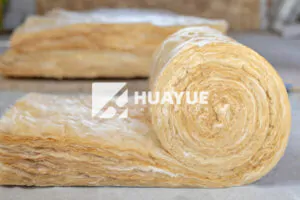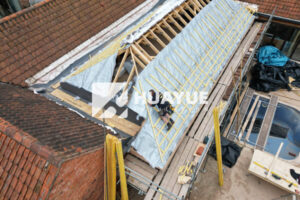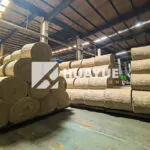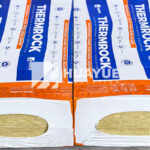Is Glass Wool Combustible?
If you are deciding on an insulation material, you might wonder if glass wool poses a fire risk. Does it burn in a fire, or is it safe to use anywhere in your home?
Glass wool is considered non-combustible due to its extremely high melting point, which greatly improves fire safety in buildings. It does not catch fire in normal temperatures or common fire situations.
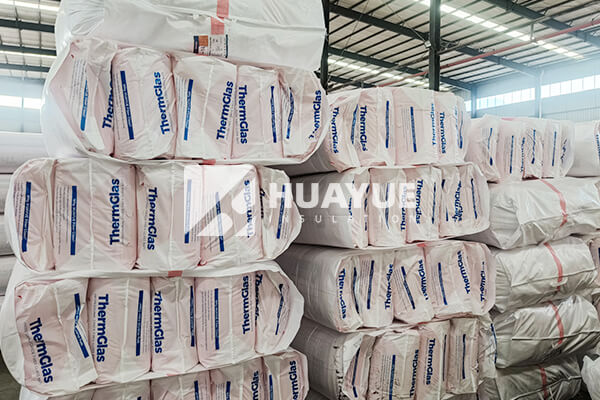
When I helped a client compare insulation materials for a renovation last year, fire resistance was their main concern. The sales team explained that glass wool stands out because it is made by melting sand and recycled glass at high temperatures. This process gives it both superb insulation capabilities and virtually no risk of combustion. But there are still practical questions that come up when selecting glass wool for a project, so let’s break these issues down further.
Can Glass Wool Catch Fire?
If you have ever witnessed fiberglass insulation up close, you may have wondered if it would burn like other materials.
Glass wool does not catch fire under normal circumstances. It does not contribute fuel to a fire and will not ignite easily, making it safer than many alternatives.

When we discuss fire protection for buildings or industrial facilities, the test of a good material is whether it will fuel a blaze or resist it. Glass wool is actually composed of fibers that are formed by spinning molten glass into thin threads. The resulting product is mostly air and glass—no flammable organics. For most applications in residential or industrial settings, glass wool acts as a fire barrier because its fibers can withstand temperatures up to 500°C (932°F) before they even begin to soften. If exposed to open flame, glass wool will neither burn nor drip molten material. In fact, it is often classified as Euroclass A1 or A2, which means it is non-combustible according to international standards.
| Feature | Glass Wool | Other Common Insulation |
|---|---|---|
| Melting Point | >600°C | Varies by type |
| Burns/Smolders | No | Some may burn or smolder |
| Fire Rating | Euroclass A1/A2 | Ranges from E to B |
| Material Composition | Sand & glass fibers | Organic fibers, foams |
| Drips When Heated | No | Foams may drip/melt |
Is Glass Wool Non-Combustible?
Sometimes a homeowner or engineer will ask me about glass wool’s technical classification. Does it actually meet legal standards as “non-combustible?”
Glass wool is officially classified as non-combustible in most global building codes. This means it will not support combustion even if exposed directly to flame.

The regulatory definition of "non-combustible" is pretty clear. To earn this rating, a material must not ignite, burn, or release flammable gases at high heat. Glass wool gets its non-combustible rating because it resists heat much better than organic materials, mineral wools, or some foam insulations. I always check products for certifications like EN ISO 1182 or Euroclass A1 to confirm their fire resistance claims. When glass wool is installed behind walls or in tank insulation, it acts as a strong barrier to fire, slowing its spread and offering time for occupants to escape, or for firefighters to control the situation. It is trusted in many public and industrial buildings for this reason.
What Are the Hazards of Glass Wool?
Even though glass wool will not burn, some people worry about other safety issues. Are there risks if you handle it or install it?
The main hazards are skin irritation and dust inhalation during installation. Long-term health risks are minimal if you use proper protective equipment and follow guidelines.
Glass wool contains very fine fibers, which can be irritating to bare skin, eyes, and respiratory tracts. When I first installed glass wool as insulation, I quickly learned to wear a long-sleeve shirt, gloves, and an N95 mask. The sensation is similar to contact with fiberglass. Most modern products are designed with less dust and binder to minimize this issue. Once installed, the insulation is safe and does not release harmful chemicals or fibers into occupied spaces. Glass wool has been rigorously tested and contains no carcinogenic substances. Proper storage and handling, such as keeping it in sealed packaging until installation, goes a long way toward reducing risk.
| Risk | Prevention | After Installation |
|---|---|---|
| Skin Irritation | Wear gloves & long-sleeve shirt | None |
| Dust Inhalation | Use masks or respirators | Not an issue |
| Chemical Risk | None—does not emit toxins | Safe in finished state |
Things to Remember Before Using Glass Wool in Your Home
Many new homeowners ask me how to make glass wool insulation safe and effective. Are there best practices that lower risk and raise benefit?
Always use protective clothing during installation. Seal all edges and joints to stop air leaks and maximize insulation value. Keep unused material in dry, covered storage.
When I prep a house or a tank for insulation, I focus first on creating a clean, dry environment. Glass wool must be kept away from water before installation, since water reduces its insulation property. I cut the batts or rolls to fit snuggly and avoid leaving gaps that could lessen energy savings—or let fire or smoke slip through. If you put glass wool behind drywall or metal jacketing, seal seams tightly with tape or caulk to boost both thermal efficiency and fire safety. Having clear safety guidelines for anyone working with glass wool is essential. After wrapping up, store leftover material in original packaging in a dry area until needed. With just a bit of preparation, glass wool can deliver both comfort and peace of mind.
| Step | Safety Tip | Insulation Tip |
|---|---|---|
| Handling | Wear gloves, mask | |
| Preparation | Cut cleanly | Fit with no gaps |
| Sealing | Seal all seams | Use insulation tape |
| Storage | Keep dry, packaged |
Conclusion
Glass wool is non-combustible, offering robust fire protection with minimal safety hazards if installed and handled properly.
You may also be interested in:
Ready to Get Started?
Get in touch with our experts for personalized solutions tailored to your needs.
Get Free QuoteLatest Articles
Let's Work Together
Ready to take your business to the next level? Get in touch with our team of experts and let's discuss how we can help you achieve your goals.
Get Free Solutions
